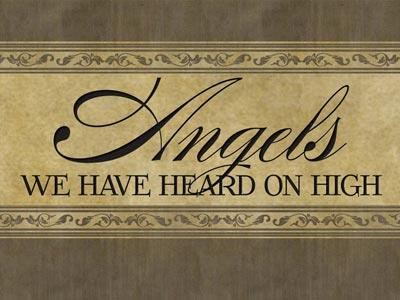-
I Heard The Bells On Christmas Day Series
Contributed by Jerry Smith on Nov 28, 2017 (message contributor)
Summary: Learn the story behind the writing of the famous carol and the points of application from the message of the carol
Everyone loves the Christmas carols! Today I am starting a series of messages based on the stories behind the writing of the carols, and the message in the carols themselves.
Take your hymnal and turn to hymn 98. The first carol we shall study is “I heard the bells on Christmas Day”.
Look down in the left hand corner of the page under the music staff and it tells us the words of the song were written by Henry Wadsworth Longfellow. Longfellow’s name should be familiar to you because he wrote such poems as “Paul Revere’s Ride”, The Song of Hiawatha”, Evangeline” as well as “Christmas Bells”. Longfellow taught literature at Harvard University for 17 years.
The carol was originally a poem, “Christmas Bells,” containing seven stanzas. Two stanzas were omitted which contained references to the American Civil War. The remaining five stanzas were slightly rearranged in 1872 by John Baptiste Calkin who also gave us the memorable tune. At least three alternative tunes have been used for this song, mostly in secular Christmas, in churches, Calkins version is most popular.
As with any composition that touches the heart of the hearer, this carol flowed from the experience of Longfellow’s tragic death of his wife Fanny and the crippling injury of his son, Charles, from the war wounds.
Fanny Longfellow was trimming some of her daughter’s curls when she decided to preserve the clippings in an envelope. Melting a bar of sealing wax with a candle, a few drops fell unnoticed at first upon her dress. Soon the dress was in flames and Fanny ran to Henry’s study. He frantically attempted to extinguish the flames with a throw rug. Failing to smother the flames with the throw rug, he began using this hands and arms. Fanny Longfellow died the next morning at the age of 44. The trademark full beard arose from Longfellow’s inability to shave after this tragedy because of the burns he received.
Longfellow’s oldest son, Charles, was a lieutenant in the Army of the Potomac. During the battle of New Hope Church, Virginia, Charles was severely wounded. The bullet hit him in the left shoulder cut across his body exiting out his right side. Henry was summoned to the hospital in Washington DC and brought Charles home for recovery.
Let us read the first stanza together as a people who fully understand it comes from a man whose broken heart had healed and felt life again. READ in unison.
What are my points of application for this song?
1. Peace --- The consistent ending line of each stanza is “peace on earth, good will to men” is taken from the scriptures in what the angels said to the shepherds. READ Luke 2:14 (the KJV worded it as the song)
There are different kinds of peace Longfellow could have referred to.
A. Peace from war
After the near death experience of his son Charles, Longfellow must have longed for the war’s end.
I know of no one who wants war, but sometimes wars are necessary to defeat evil such as the Nazi’s in WW2. We would love to see our soldiers come home and that there would be no war in Iraq or Afghanistan. Until that time comes, let us pray for our President and his staff to make wise decisions and peaceful solutions can be worked out among the world’s leaders.
B. Peace in relationships
One a more personal note, are you living at peace with everyone?
Is your home peaceful or do you argue and fight most of the time? Are you a peacemaker or someone who incites trouble?
Matthew 5:9 READ
C. Inner peace
If your soul is weary and in turmoil, then come to Jesus and learn that He is the Prince of Peace. Philippians 4:6, 7 READ
Let Jesus give you the peace that passes understanding. If you have not asked Jesus to come into your heart and become your Savior, then do that today. He will give you true peace. Trust Him today!
2. Grief --- Longfellow wrote this song out of the grief he felt over the death of his wife and critical wounding of his son. Many of you are grieving too. Read the third stanza.
A. In despair
Longfellow was “in despair”. Despair is a word that expresses to me lower level of emotion than even grief. The first Christmas after Fanny’s death, Longfellow’s journal entry reads, “How inexpressibly sad are all holidays…a Merry Christmas say the children, but that is no more for me”.
Maybe you are grieving even despairing the death of a love one, the loss of a job, a broken relationship or friendship or some other situation. Grief and despair covers many pains. In Longfellow’s grief, he was not able to emotionally hear the bells ringing their vibrant sound of peace and joy. Are you having a similar problem?

 Sermon Central
Sermon Central



